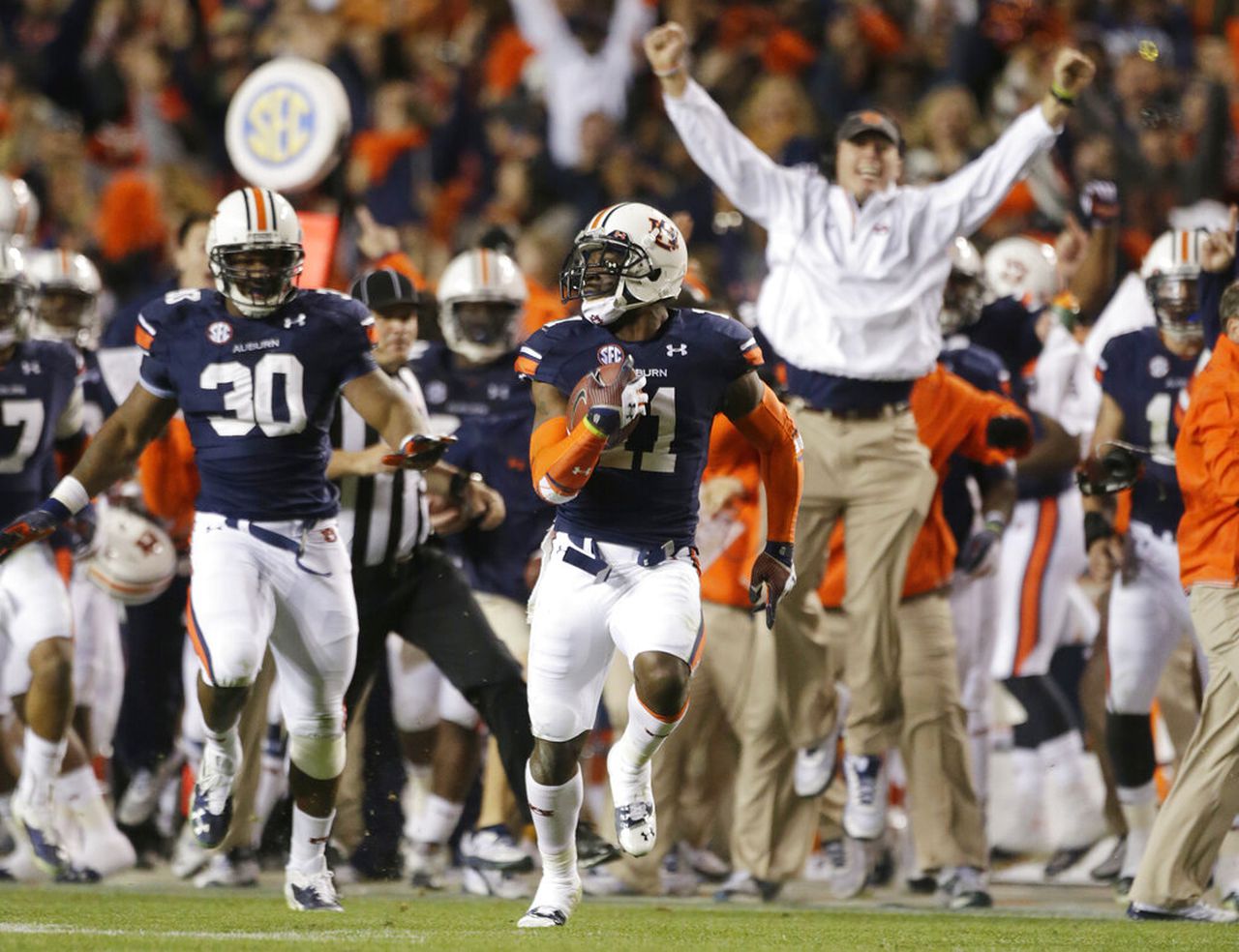Is the Kick Six the greatest college football play ever? Depends on who you ask.
Ivan Maisel felt this before. It was getting late in Jordan-Hare Stadium and one second was being put on the clock. Maisel had enough experience to be ready for anything. He went to his first Alabama game in Denny Stadium in 1966 at six years old when he “contracted the disease” known as college football fandom.
Eventually, he became a reporter and was at the 1994 “Miracle at Michigan.” He watched reporters caught with outdated copy after Colorado scored two touchdowns late in the fourth quarter rush back to the interview room to correct their stories stating Michigan had won. After that, Maisel opted to stay in the press box for close games. The 2013 Iron Bowl fit that description, tied at 28 in the fourth quarter. Then came 109 yards. There goes Davis. And Maisel waiting behind a middle-aged couple trying to storm the field and navigate the chaos.
When Maisel, born in Mobile, sat down to write his story for ESPN, Red Smith’s 1951 column in the New York Herald Tribune “Miracle at Coogan’s Bluff” came to mind:
“The art of fiction is dead. Reality has strangled invention. Only the utterly impossible, the inexpressibly fantastic, can ever be plausible again.”
Smith was describing the “Shot Heard ‘Round the World,” what many consider one of the greatest plays in baseball history. Is the “Kick Six” the best football has to offer?
Days after, Auburn’s athletics website posted a roundup of reactions. From Whoppie Goldberg to ESPN Sport Science explaining the physics to newspaper columnists around the country, many declared it the greatest ending ever. Bobby Bowden put it in his top three. Yet, Alabama fans are likely to hesitate.
“No, no, no, no. Obviously, from my perspective, I am not qualified to pick a greatest play,” longtime voice of UA football Eli Gold said. ” … It was one of the very, very big plays. But no, I would, I would combat that description.”
It’s an unanswerable question. So, ahead of the 10th Anniversary, AL.com decided to give it a shot as part of a project exploring the Kick Six’s legacy.
As far as contenders, Gold offered Tua Tagovailoa hitting DeVonta Smith in stride to win the 2018 national championship. There’s also the 1982′s “The Play” between Cal and Stanford. Nick Saban has the 2002 Bluegrass Miracle. Boise State broke out the Statue of Liberty to win the 2007 Fiesta Bowl. In 2015, Michigan mishandled a punt against Michigan State. All marriages of circumstance and magic. Each represents a cultural touchstone, possibly linking your favorite play to your birth year and zip code. In Alabama, in the 87-year history of the Iron Bowl, it’s hard to find a better option.
“When it comes to naming the greatest play, or the greatest team or the greatest coach, we’re all handicapped by our own nearsightedness,” said Maisel. “We as a generation react to what we saw on TV and what we witnessed. There are games and plays from the (1930s) and ‘40s that lived on for years and decades, and now nobody knows anything about them.”
The first college football game ever between Rutgers and Princeton in 1869 had one student newspaper reporter present and no photographers, according to Christian Anderson, an associate professor of higher education at the University of South Carolina. Anderson, who co-authored an expansive look at the history of the sport and curated an exhibit at USC, noted two paintings that commemorated the game.
He described the first, done by William Boyd in 1932, as “probably somewhat accurate” with scrawny teenagers. Then, ahead of the 100th anniversary, Arnold Friberg delivered “The First Game,” an oil painting with hulking figures in a rugby-type scrum.
Thanks to CBS camera angles, the replay clearly showed Chris Davis (11) avoid the sideline as he won Auburn a historic Iron Bowl. (AP Photo/Dave Martin, File)AP
For the Kick Six, SEC on CBS producers Steve Milton and Craig Silver captured the hysteria. As Davis crossed the goal line and was soon mobbed, audiences were shown 20 camera cuts during 81 seconds of reaction shots, including the Alabama fan and Auburn offensive lineman Avery Young in similar states of disbelief. We even have a definitive angle of Davis tiptoeing the sideline, cementing myth into fact. The trio of iconic calls from Gold, Auburn radio’s Rod Bramblett, and CBS play-by-play commentator Verne Lundquist mesh perfectly.
“It’s a game that people look forward to all year,” Anderson said. “When you have a play like that, your level of anticipation is already high and you have (the return), it’s going to sear itself into your psyche if you were there or if you were watching it live on TV. Now you can relive it over and over again online watching it.
“You can probably define what era someone is from based on how they define their relationship with one of these games.”
Earlier this season, Saban explained that rivalries in SEC football are rooted in the culture. With a lack of pro teams in many southern states, there are congregations every Saturday.
Anderson, from Utah, has his Iron Bowl in the form of the Holy War series against BYU. He still winces at the doinked field goal in the 1998 loss. But non-field-goal walk-offs are rare in football, especially ones that feature backup kickers and returns that cover almost every inch of the field. How many colleges can brag that they’re the answer to a “Jeopardy!” question for beating their rival?
Both sides have their moments like “Punt Bama Punt” in 1972 and Bryce Young’s 97-yard drive in 2021. Bo Jackson has made both fanbases happy with infamous plays. But Davis’ miracle came just after another adrenaline spike, the Prayer at Jordan-Hare, extending to Auburn’s run into history books and memories.
Nick Alvarez is a reporter for Alabama Media Group. Follow him on Twitter @nick_a_alvarez or email him at [email protected].
